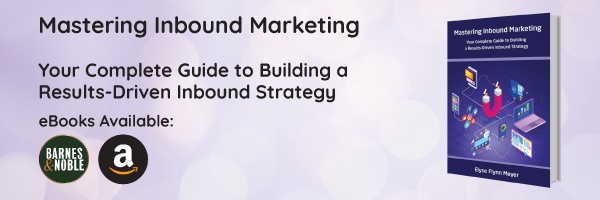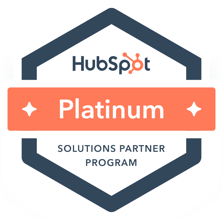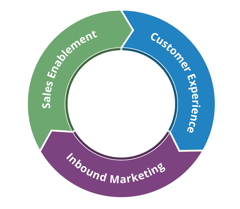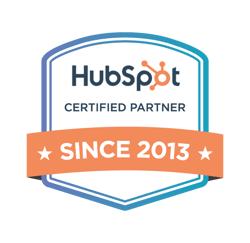Creating a social media strategy is not as easy as it sounds. Many companies try to post as much content as possible to stay in their followers’ news feed, but this tactic does not work anymore. Social media channels such as Facebook, Twitter, LinkedIn, and others are constantly changing their algorithms to determine what posts may and may not be easily visible to followers. Without a goal-focused social media strategy and a plan on how that strategy will work with your entire marketing program, social media will start to waste precious time without getting significant returns. So how do you build a social media strategy that works for you? The key is to make your social media program sustainable and connect with your followers based on the content that will be most relevant and helpful to them.
Choosing Your Social Media Platforms:
Not every social platform is suitable for every company. You do not need to be on every platform, and you should not be on every platform. That would take a tremendous amount of time to manage your social media presence and make you far less effective because you would be spreading yourself too thin across different channels. Determine which social media channels your personas spend the most time on, and only focus on those channels. From the persona exercise, you will determine where your ideal audience is spending their time online. The channels where your personas spend most of their time is where you want to be on social media. Deciding on some specific channels to use can be a relatively easy decision because so many people are already on those platforms, such as Facebook and LinkedIn. Other channels will require research to see if they are helpful to your followers. For example, Twitter, Instagram, and SnapChat may be popular, but not where your audience engages. You can ask your prospects and customers what is most important to them and where they typically go for information and then start to be present on those channels. Here are some tips when considering some of the most popular channels:
- Facebook: Every business should have a presence on Facebook because there are billions of monthly active users. If you’re a B2B business, you may not have much engagement on Facebook, but your presence is still necessary. There are also other opportunities for targeted advertising on Facebook as long as you have a page and an active social program. In addition, Facebook groups provide a great platform to connect with other users and engage directly with people with similar interests.
- Instagram: Over the last several years, this channel has increased tremendously in popularity. Instagram is a photo-sharing application, so if your business has a lot of imagery and visuals to connect with your audience, Instagram is the channel for you. If your company does not have imagery or photos to support this platform, it could become very time consuming without much return.
- LinkedIn: If you are B2B or B2C, you need a LinkedIn company page so your employees can have your company name attached to their individual profiles. For lead generation and engagement, LinkedIn is primarily beneficial for B2B companies. It is also essential that your employees and your leadership team are engaged on LinkedIn. People like to connect with other people on this platform. It is less about engaging with brands and more about engaging with your connections. Sharing your content through your employees’ personal channels will increase the reach of your posts, engagement, and click-throughs back to your website and digital assets.
- Twitter: Contrary to what you may think, Twitter is an excellent tool for both B2B and B2C businesses. Most of the B2B companies that I work with have an active Twitter account, and it is generally their second or third most popular channel. In general, you should not expect a large number of leads (conversions) from Twitter, but you should see an increase in website page visits when sharing your articles on this channel. For B2B businesses, remember that your leadership team should also have their own personal Twitter accounts. You can then post articles and insights from your business page and your leadership team’s personal pages. Similar to LinkedIn, personal pages on Twitter drive even more engagement because those social posts are coming from an individual instead of a company.
- YouTube: Today, YouTube is the 2nd most popular search engine with more than 60 billion hours of video views each month. If you have video content or are thinking of creating video content, you should have a presence on YouTube. It will allow your videos to get found by people searching for video as their preferred content type.
- Other Channels: There are many different social networks such as TikTok, SnapChat, Pinterest, Tumblr, and more. It’s necessary to research any channel to ensure your target audience is engaging on those networks before you start to invest resources and budget in supporting additional platforms.
Practical Application:
A professional services firm we work with was initially hesitant about having a social media presence because they weren’t sure if it would work for their audience. Once we did their persona research, we found their audience highly engaged on social media. Their personas use specific channels to research potential products and services for their organizations. We determined that their most popular channel would be LinkedIn. They are a B2B company with over 6,000 connections among its leadership team. Since it is so popular, we also built a Facebook page to have a presence on that channel. In addition, we set up a Twitter page to connect with thought leaders and other industry professionals looking to share and engage with content. We have seen that LinkedIn is responsible for 89% of their social media website traffic, so a majority of their social media resources and budget go to LinkedIn. We continue to keep the other channels active because they receive engagement, but just not the same engagement as LinkedIn. It’s essential to track this level of data once you have set up your social media accounts and start implementing your strategy to refine your channels and content.
This chart may help you evaluate the most popular social channels and where you should engage with your audience.
.jpg?width=1024&height=572&name=699581_Book%20Choosing%20Social%20Platform_102221%20(1).jpg)
Building a social media strategy and ensuring you're on the best channels for your organization is essential to your success. Make sure you invest the time to research what social networks your buyer personas are spending time on so you can ensure you are sharing helpful content that will create engagement with your prospects and customers.
Are you looking for ways to optimize your inbound strategy? The "book "Mastering Inbound Marketing: Your Complete Guide to Building a Results-Driven Inbound Strategy," written by Elyse Flynn Meyer, Owner & Founder of Prism Global Marketing Solutions, covers every aspect of the inbound marketing methodology, including the revenue generation trifecta of marketing, sales, and the customer experience. Check out the book to see how to most efficiently and effectively develop, implement, and maintain your inbound strategy.


__Square.png?width=250&height=250&name=Marketing_Hub_(1)__Square.png)




.png?width=250&name=diamond-badge-color%20(1).png)
